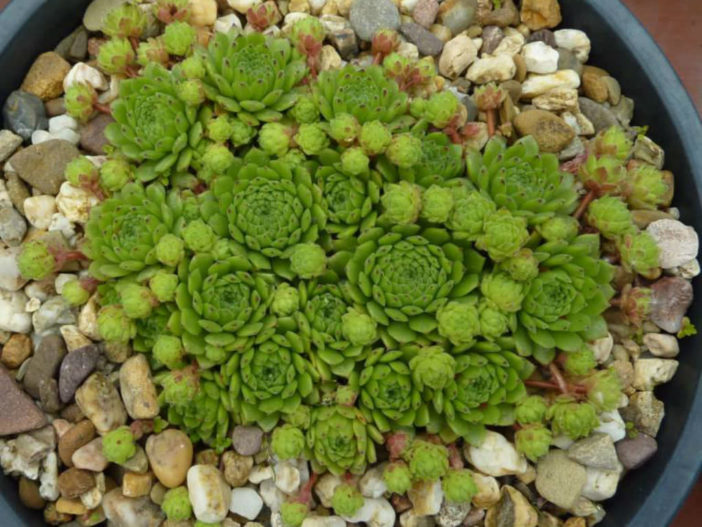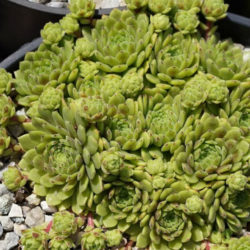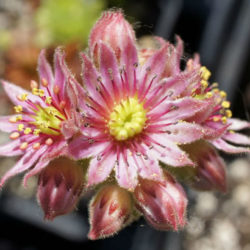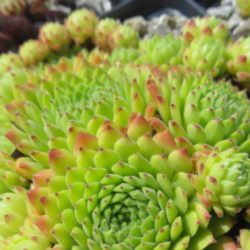Scientific Name
Sempervivum 'Windstille'
Common Name(s)
Hen and Chicks, Houseleek, Live Forever
Scientific Classification
Family: Crassulaceae
Subfamily: Sedoideae
Tribe: Sedeae
Subtribe: Sedinae
Genus: Sempervivum
Origin
Sempervivum 'Windstille' is a sister seedling of Sempervivum 'Thompson's Delight' selected by Volkmar Schara in Germany in 2013.
Description
Sempervivum 'Windstille' is a small succulent that forms dense clumps of compact rosettes of fleshy, light green leaves that become orange at tips in spring. In the summer, only the outer leaves have orange tips. When the rosettes bloom, the leaves turn red. The rosettes can reach up to 2 inches (5 cm) in diameter.
The flowers are star-shaped, bright pink, and appear in clusters on a leafy stalk that rises above the foliage in mid-summer. The rosette dies after flowering but produces many offsets that continue to grow.

Hardiness
USDA hardiness zone 5a to 10a: from −20 °F (−28.9 °C) to 35 °F (+1.7 °C).
How to Grow and Care
Sempervivums are not difficult to grow, provided they are not waterlogged and killed from excess watering. They can be easily grown outdoors and in containers, and they earned the name "Houseleeks" from their tendency to root on the roofs of houses. After the mother plant flowers, it will naturally die, but the plant has likely produced many offsets that will continue to grow by this time. These are excellent for cold windows. Sempervivum earned their popular name "Hen and Chicks" from their growth habit. The mother plant, or hen, sends off numerous offsets, which will cluster around her base like chicks. These offsets can be easily repotted, or the plants can be left to form a clumping mat.
Repot as needed, preferably during the warm season. To repot a succulent, make sure the soil is dry before repotting, then gently remove the pot. Knock away the old soil from the roots, making sure to remove any rotted or dead roots in the process. Treat any cuts with a fungicide. Place the plant in its new pot and backfill with potting soil, spreading the roots out as you repot. Leave the plant dry for a week or so, then begin to water lightly to reduce the risk of root rot.
See more at How to Grow and Care for Sempervivum.
Links
- Back to genus Sempervivum
- Succupedia: Browse succulents by Scientific Name, Common Name, Genus, Family, USDA Hardiness Zone, Origin, or cacti by Genus
Photo Gallery
Click on a photo to see a larger version.


